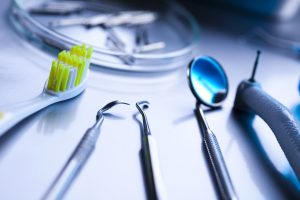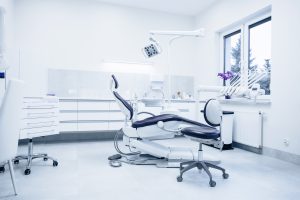
Hello, everyone. You may have seen my prior post on Dental Support Organizations (DSOs) and their impact on the dental industry. That post was the first of a series on DSOs. And, if you are asking, why did I choose to do a series of posts on DSOs? Well, not a day goes by that a dentist, another attorney, a private equity firm, a DSO itself that I may be working with, or some other third party that I am working with will bring up the DSO concept and want to talk about it and understand it. So, I find myself thinking about DSOs as well, and wanting to write about them. So, here we are again. In this next post, I am writing about a term that is commonly thrown around by many—EBITDA—although I am not sure that the “many” truly understand what EBITDA means in the context of a dental practice. So, let us discuss it.
Why is EBITDA Important?
Before we even talk about what it is, why is EBITDA important? Well, 22 years ago when I started working in the dental industry, and really probably 5 years ago as well, we valued dental practices based upon a combined formula of adjusted collections and net profit, although there are a number of variations to that formula. But I think it is fair to say that most dental professionals that valued dental practices back then focused on adjusted collections and net profit. By considering both categories, we were really comfortable that we would get very close to a fair market value number for that particular dental practice, whether we were on the buy side or the sale side. Now, however, because of the impact of private equity (PE), DSOs in general, and other third-party financial folks more recently involved in the dental industry, we have begun incorporating EBITDA as a third factor in calculating fair market value. Why? Because that is how many financial/business folks value businesses in the first place. And, as others enter the dental industry valuing businesses, they are doing what is familiar to them, valuing the dental practices based upon some aspect of EBITDA. Now, again, we were not doing that it in the dental industry 22 years ago. It wasn’t right or wrong at the time; we simply were not doing it. Today, we still consider the adjusted collections and net profit. But, to truly get to a fair market value of a dental practice, you now have to consider the impact of DSOs, and the overall value formulation that considers EBITDA as well. Therefore, we must understand it.
What is EBITDA?
As many commentators have suggested, and I agree, all dental practice owners and their advisors need to understand EBITDA, which simply stands for: earnings before interest, taxes, depreciation, and amortization. When you think about it, it is a measure of expected cash flow that is available to third-party investors, not necessarily the licensed dentist, before taking into consideration the dental practice’s debt service, taxes, and certain other expenditures that generate depreciation and amortization deductions for the business. Another way to look at this is by a more formulaic approach, whereby we are adding back certain expense categories. We may use a formula like: net income, plus, to the extent deducted in the calculation of net income on the financials: (1) interest expense, plus (2) federal, state, and local taxes, (3) depreciation, and (4) amortization.
Practice Note: As my good friend, Jim Boltz, has said: Understanding EBITDA is critically important to understanding the value of your practice, and the potential exit strategies that may exist from a succession planning perspective. Jim, along with his partner, Bruce Wickham, is the owner of Zimmerman Boltz, a boutique accounting firm specializing in representing dental practices across the United States.
How do we calculate EBITDA?
When valuing a business, it is important that we evaluate a dental practice’s performance based upon certain objective and consistent metrics (i.e., we want to ensure an “apples to apples” comparison). To do that, we have to consider the revenue and expenses before the impact of certain accounting and financial deductions, as well as certain discretionary and non-recurring expenses. And, to come up with a consistent number that includes EBITDA, we have to ensure that we calculate EBITDA consistently as well as understand the nuances of a third party’s calculation of EBITDA.
Step 1. 12 Months of Trailing EBITDA. We want to start with the trailing 12-month financials to better understand EBITDA in the coming months. With certain exceptions, the most recent financials will be a gauge of how the dental practice is doing. And, with certain adjustments discussed below, the trailing 12 months will reveal a more accurate portrayal of EBITDA during normal conditions, not impacted by the owning dentist’s personal discretionary expenditures. We will want to remove the variations.
Step 2. Normalize Revenue. What I mean by that is we want to ensure that we are working off the actual revenue generated by the dental practice after refunds and other adjustments, as well as ensuring that we are not including non-recurring revenue items. As an example, during COVID, we would not record EIDL loans and Payroll Protection Program loans as income. These would not be accepted for our revenue calculation. Thus, it is important to dig into the revenue to make sure you have a full understanding of that number, and make the necessary adjustments, before we start making adjustments on the expense side.
Step 3. Remove Non-Cash Items. The second step in calculating EBITDA is to carefully examine the expenses. The EBITDA calculation includes removing fluctuating factors that do not provide a true understanding of cash flow. Depreciation and amortization are two of those noncash items. Basically, noncash items are financial items that are included in the dental practice’s net income, but which do not affect the cash flow. While they may not impact the net cash flow of the business, these expenses impact the bottom line of the income statement and result in lower reported net income, which requires us to add them back. Dental practices generally use their income statement to tell lenders and other interested parties how much money they have made or lost in a given period, as well as help the dental practice owner make decisions going forward about the business. So, it is important to fully understand the actual net cashflow.
Step 4. Remove Expenses Related to Debt Service and Taxes. Again, remember, we want to fully understand what an investor would receive if they purchased the dental practice assets. To do so, we have to remove the expenses related to debt service and taxes, as well. Certainly, dental practice owners may say that these are necessary to operate a dental practice. But, again, to get to an apples-to-apples comparison we have to remove these items, since not everyone will have debt, and the taxes will vary, depending upon a number of factors, including the tax structure of the business. Remember, from an investor’s perspective, they are wanting to know the actual net profit from a cash perspective if they were to own the dental practice.
Step 5. Remove Discretionary Expenses. Discretionary expenses are only limited by the imagination of the dental practice owner. I say that jokingly, to an extent. Over the last 22 years of working with dentists and dental practices, I have seen many types of expenses being run through a dental practice, not all of which are necessary to operate that specific dental practice. These type of expenses may include: (1) paying the owning dentist’s spouse or children that are not truly working within the practice, (2) paying family members that are working within the dental practice above a fair market value wage, (3) paying rent above fair market value because the owning doctor or a family member owns the real estate that the practice operates in, (4) automobile payments, (5) certain marketing expenses, (6) certain meals and entertainment, (7) travel expenses; (8) continuing education, and (9) many more. You really have to dig into the general ledger and chart of accounts of that particular dental practice to fully understand the discretionary expenses, and ensure those items are added back.
Step 6. Remove Non-Recurring Expenses. There are many types of non-recurring expenses that a dental practice may have in any given period that we would not expect to reoccur. These expenses may include: (1) litigation expenses, (2) certain capital expenditures, (3) a payout on a judgment related to a disgruntled employee, (4) some form of write-off, (5) the loss related to the sale of an asset, etc. These expenses should be identified and added back by removing them from the overall operating expenses.
Step 7. Consider Non-Essential Employees. I want to be careful here and not offend any employees. But, in the dental practice setting, we may have dental practices that are overstaffed, or we may have employees that add value to that one particular practice that would not necessarily add value to an outside investor as the buyer. As an example, we may have too many people at the front desk, or we may have an in-house accountant/bookkeeper that will not be needed because the buyer has their own back-office personnel to cover those services. If we can identify who those non-essential people are, we would likely add back the expenses related to that employee as well. And, to be clear, that would not be just the yearly pay, but also the taxes and fringe benefit expenses related to that employee.
Step 8. Adjust for Dentist’s Compensation. We would add back any compensation that was paid to the owning dentist on the financials as actual compensation via a W-2. We would then subtract fair market value compensation that an investor would have to pay a dentist for performing the dental services that actually generated the revenue brought in over the last 12 months. The question we always receive is how much should the fair market value compensation be for that dentist? We generally look at this as a percentage of net collections. This calculation of a percentage of net collections is completely discretionary. But, depending upon the DSO, it should be what that particular DSO pays associates to work in the practice. Otherwise, a range from 25% to 32% is reasonable. On a specialty practice, like a Perio practice, that number may be as high as 35%.
Dental Practice Owner’s Perspective
In talking with many dentists, it is hard for them to wrap their heads around how EBITDA impacts the valuation process and the DSO industry. But, basically, you are adding certain expenses back to your net income by subtracting them from your operating expenses. Another way to look at this is to say that the lower your expenses are in operating your dental practice, the higher your EBITDA will be. Now, we do not want to be one of those practices that cut costs but negatively impact their ability to generate revenue. We do not want to do that. I am simply saying those expenses we discuss above should be subtracted from your operating expense by adding them back to net revenue to get to a true understanding of your EBITDA for discussions on DSO valuations. And maybe, just maybe, we can consider whether all those expenses are necessary going forward in the operation of your dental practice.
In sum, before talking about EBITDA, understand yours and understand how it impacts a valuation of one of your most valuable assets, your dental practice. And, let’s remember that no two dental practices are the same and no two DSOs are the same. There are varying factors that impact fair market value in every dental practice and every DSO. But, understand the basics to better understand your overall enterprise value, and then let’s start the conversation from there.
I think I will continue to discuss EBITDA in the next post from the DSO’s perspective, and how DSOs use EBITDA to better understand their options. Have a great day!
Please see my prior post on dental support organizations and their impact on the dental industry.
Vince Nardone is a partner in the Benesch Healthcare+ Practice Group with a specific focus in the dental industry, where he is a thought leader and regular speaker. He may be reached at (614) 223-9326 or vnardone@beneschlaw.com.
 Vince Nardone Discusses Employment Contracts with Ohio State Dental Students
Vince Nardone Discusses Employment Contracts with Ohio State Dental Students  Navigating the 2024 Landscape: Strategies and Considerations for Dental Support Organizations (DSOs)
Navigating the 2024 Landscape: Strategies and Considerations for Dental Support Organizations (DSOs)  Sellers of Dental Practices to DSOs need to have a Buyer’s Mentality Requiring Selectivity and a Well-Thought-Out, Decision-Making Process
Sellers of Dental Practices to DSOs need to have a Buyer’s Mentality Requiring Selectivity and a Well-Thought-Out, Decision-Making Process  Increasing Profitability by Minimizing Disruptions within Your Dental Practice
Increasing Profitability by Minimizing Disruptions within Your Dental Practice  As a Dentist, What Are My Obligations Related to Out-of-State Patients and Potential Prescription Drug Abuse?
As a Dentist, What Are My Obligations Related to Out-of-State Patients and Potential Prescription Drug Abuse?